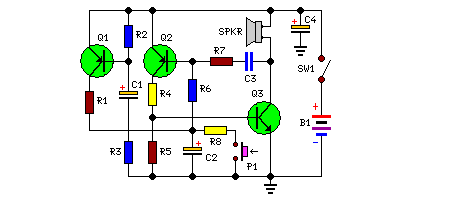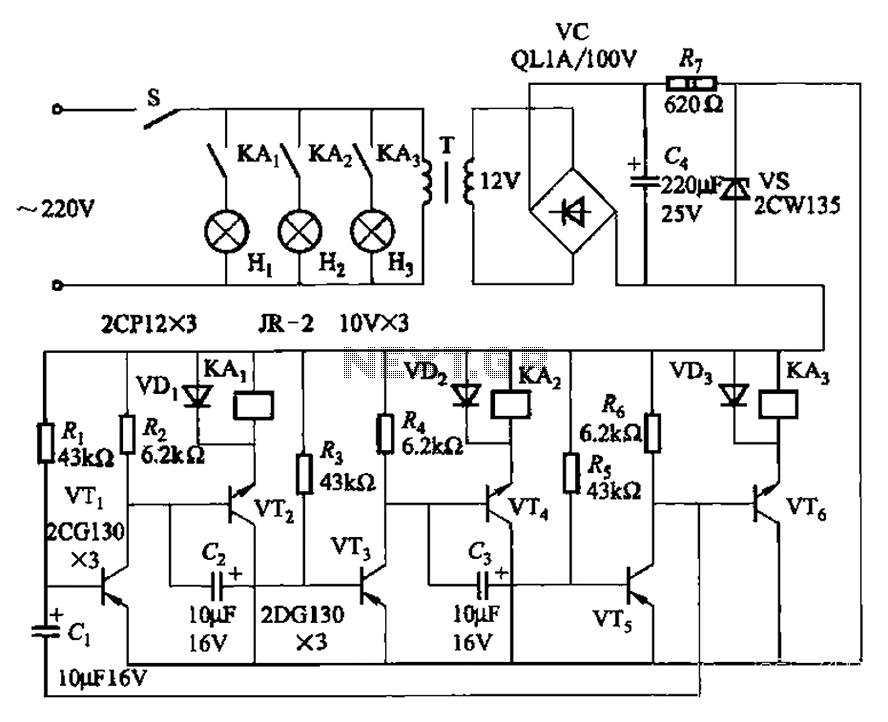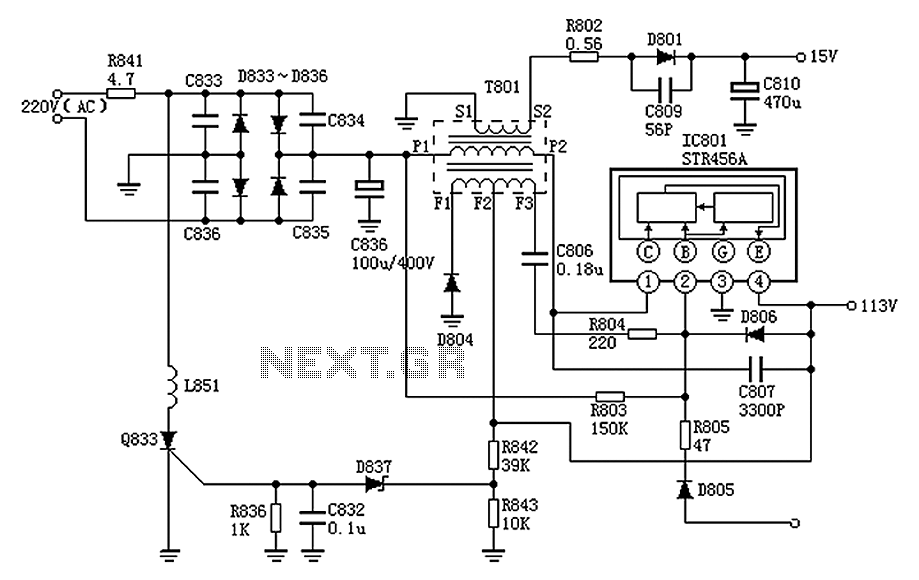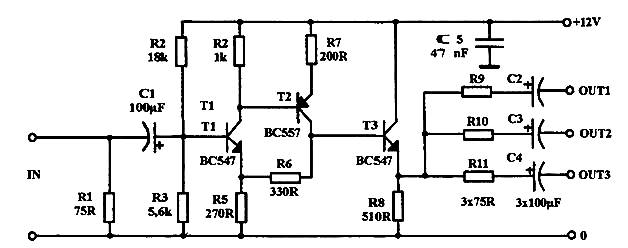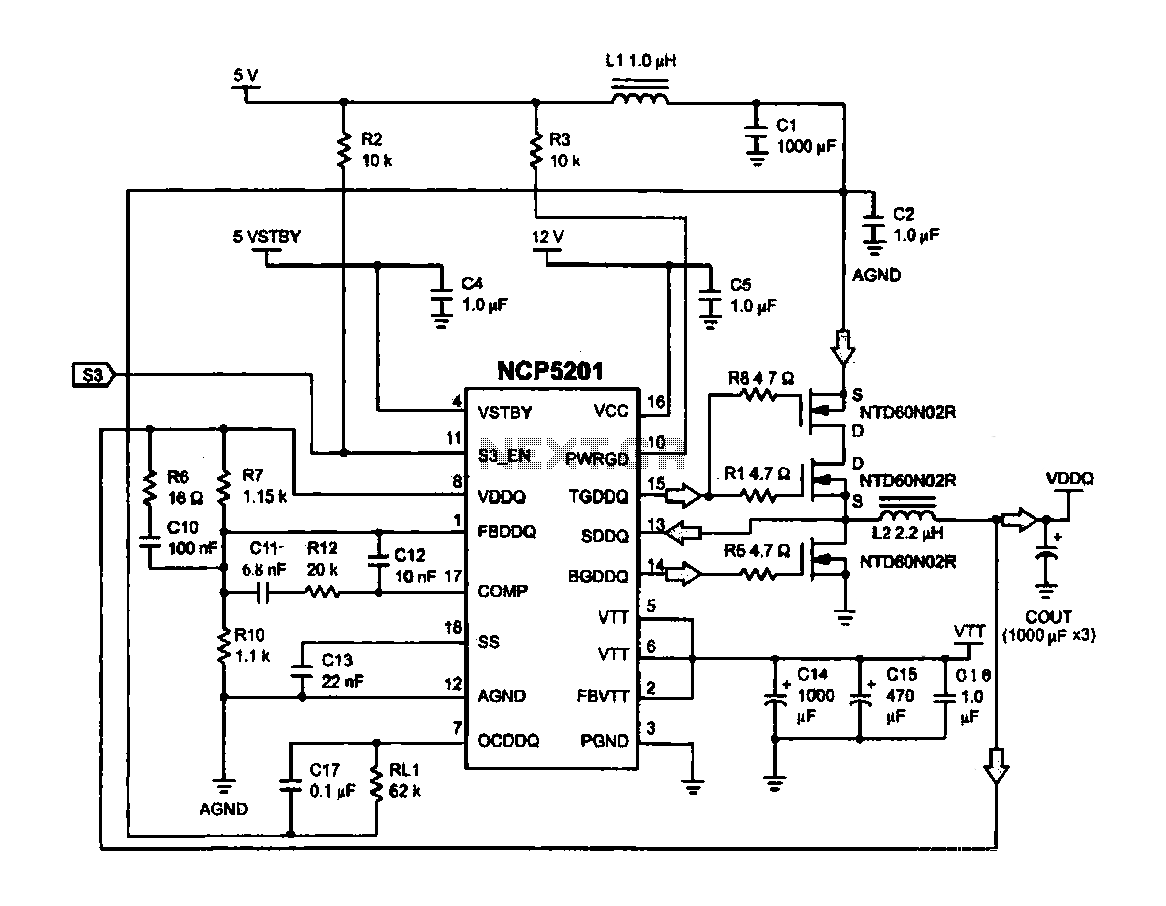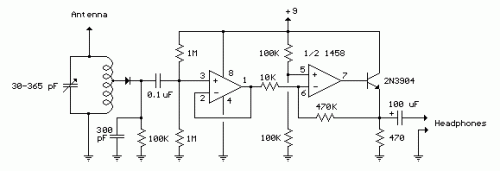
DDR Memory Power Supply: 5V to 28Vin 1.5V@ /-10A Vtt (3V external reference)
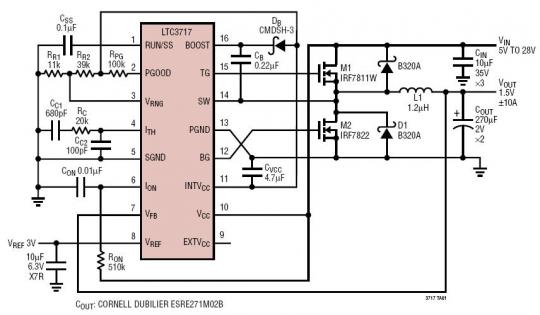
The LTC3717 is a synchronous step-down switching regulator controller designed for double data rate (DDR) and Quad Data Rate (QDR) memory termination. It utilizes a valley current control architecture to achieve very low duty cycles without the need for a sense resistor. The operating frequency is determined by an external resistor and is adjusted for variations in VIN.
The LTC3717 operates as a highly efficient synchronous step-down regulator, which is essential in applications requiring precise voltage regulation for memory termination in high-speed memory systems. The valley current control architecture allows the LTC3717 to maintain stability and efficiency across a wide range of load conditions, making it particularly suited for DDR and QDR memory applications where power efficiency and thermal management are critical.
The device features an adjustable operating frequency, set by an external resistor, which provides flexibility in design and allows for optimization based on specific application requirements. Additionally, the LTC3717 is designed to compensate for variations in input voltage (VIN), ensuring stable operation even under fluctuating supply conditions.
In terms of performance, the LTC3717 supports a wide input voltage range and can deliver high output currents, making it suitable for various demanding applications. Its design minimizes the need for external components, simplifying the overall circuit layout and reducing the footprint on the PCB.
Overall, the LTC3717 is an advanced solution for memory termination, offering high efficiency, low duty cycle operation, and adaptability to varying input conditions, which are essential for modern high-speed memory systems.The LTC3717 is a synchronous step-down switching regulator controller for double data rate (DDR) and Quad Data Rate (QDRTM) memory termination. The controller uses a valley current control architecture to deliver very low duty cycles without requiring a sense resistor.
Operating frequency is selected by an external resistor and is compensated for variations in VIN. We aim to transmit more information by carrying articles. Please send us an E-mail to wanghuali@hqew. net within 15 days if we are involved in the problems of article content, copyright or other problems. We will delete it soon. 🔗 External reference
The LTC3717 operates as a highly efficient synchronous step-down regulator, which is essential in applications requiring precise voltage regulation for memory termination in high-speed memory systems. The valley current control architecture allows the LTC3717 to maintain stability and efficiency across a wide range of load conditions, making it particularly suited for DDR and QDR memory applications where power efficiency and thermal management are critical.
The device features an adjustable operating frequency, set by an external resistor, which provides flexibility in design and allows for optimization based on specific application requirements. Additionally, the LTC3717 is designed to compensate for variations in input voltage (VIN), ensuring stable operation even under fluctuating supply conditions.
In terms of performance, the LTC3717 supports a wide input voltage range and can deliver high output currents, making it suitable for various demanding applications. Its design minimizes the need for external components, simplifying the overall circuit layout and reducing the footprint on the PCB.
Overall, the LTC3717 is an advanced solution for memory termination, offering high efficiency, low duty cycle operation, and adaptability to varying input conditions, which are essential for modern high-speed memory systems.The LTC3717 is a synchronous step-down switching regulator controller for double data rate (DDR) and Quad Data Rate (QDRTM) memory termination. The controller uses a valley current control architecture to deliver very low duty cycles without requiring a sense resistor.
Operating frequency is selected by an external resistor and is compensated for variations in VIN. We aim to transmit more information by carrying articles. Please send us an E-mail to wanghuali@hqew. net within 15 days if we are involved in the problems of article content, copyright or other problems. We will delete it soon. 🔗 External reference
